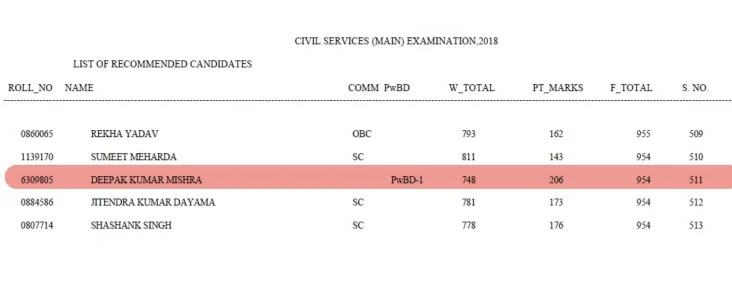- Joined
- Jul 1, 2024
- Messages
- 4,815
- Likes
- 25,302
Damn, teaching is something critical for everyone. There also you need reservation. Screw them.
Are these positions lying vacant due to reservation or due to lack of professors?
I feel we need to start paying our teachers and professors substantially more especially in Premier Institutes.
Current average salary analysis:
IITs:
IIMs:
This salary structure is literally pathetic considered these are positions are in IITs and IIMs.
A lot of qualified Professors chose to immigrate to well-paying Universities outside.
Looks decent when adjusted against purchasing parity.
Academicians do not earn all that much even in gora nations, unless involved in consultancy/industry/dedicated state backed research programmes.
Indian specialists are working for China and they are hearing them, but our own does not.
_____________________________
India can't grow with IAS. They are at the root of many issues India is faced with. I've personally heard of promising projects from both ADMK and DMK leaders, but it's the bureaucracy that stifles progress. Democracy is often overshadowed by RED TAPE - BUREAUCRACY.
View: https://x.com/SriramMadras/status/1908941592053817427?t=SCqvHWBe8IHfVOShEjBkrQ&s=19
One and only way constitutional amendments, and Judiciary needs to be first reformed if not they will 100% revert the amendment citing something from somewhere.But what's the way through or process to make changes to this system.
When Modi-1 Govt came, it looked like they are going to go berserk against the babudom and reform the bureaucracy, but they gave in eventually.
Even PM does not have power to dismiss or fire any Babu. They can just be sent on leave with pay and that's all and eventually they are transferred to another location.
Correct. People blame Government for not holding Bureaucracy accountable but it's not that govt won't but it can't. Babu can go to courts who would anyhow side with them.One and only way constitutional amendments, and Judiciary needs to be first reformed if not they will 100% revert the amendment citing something from somewhere.
As the current mechanism is not working for making the government babus accountable for the work they are doing they are not completely accountable they deflect the accountability to someone else lower down the rank and even if there are corruption charges the courts somehow will find a way to support the babu for some reason as whole ecosystem of babus protect each other.
Decent doesn't work for these institutes if you need some serious teaching and studies!
Similar comparable Institutes in China/Japan/Korea/Singapore and US/EU pays significantly more.
pradhan mantri gulag yojnaBut what's the way through or process to make changes to this system.
This sounds cool when we write in the forum, but who is going to implement this in reality?pradhan mantri gulag yojna
me, hopefully, somedayThis sounds cool when we write in the forum, but who is going to implement this in reality?
That is a given, no? Of course a varsity in some uber rich nation would have to pay more to adjust for expenses. A senior faculty in any centrally funded university earns more than 10X the average national nominal income (excluding grants) - that is like super generous in a country like India.
Think of it this way, we did not need to pay the ISRO, BARC guys on par with their American/EU counterparts (I am making the comparison on absolute US$ terms here - on a PPP adjusted scale, they are compensated well enough) to make rapid strides in space and nuclear tech, did we? It is also why the IISERs are doing so well in basic science researches in such a short span of time - because basic science is less resource intensive (ie, no need for dedicated govt programmes) and generally not dependent on market demands.


Rakesh P Sheth
@rakeshpsheth
6h
Replying to @TVMohandasPai @narendramodi @nsitharaman @FinMinIndia @PMOIndia
Back in 2019, I received a staggering ₹69 lakh income tax demand for the FY 2012–13….seven years after the books were closed, audits signed off, and taxes duly paid. To appeal, I had to cough up 20% of the amount upfront over ₹13 lakh as a precondition.Despite a rock-solid case rooted in standard accounting principles, the ITAT ruled against me. So I took the fight to the High Court. After years of stress, documentation, and legal back-and-forth, I finally won in 2024.Victory, yes….but at what cost?Who pays for the legal fees I incurred fighting an incompetent interpretation? What about the interest lost on the 20% deposit made under protest? Why is the department not held accountable for reckless demands, when they lose in a court of law?The issue isn’t just personal. It exposes a deeper rot….how tax officers, with little to no understanding of accounting standards, wield power without consequence. Their lack of domain knowledge, combined with institutional pressure to raise revenue, leads to arbitrary demands that can derail businesses and lives.There is no penalty for their ignorance. No system of restitution. The taxpayer bleeds time, money, and mental peace with zero consequences for those responsible.This is not just bad policy. It’s systemic injustice.And the best part my IT officer had an education background of “Dentistry”……



